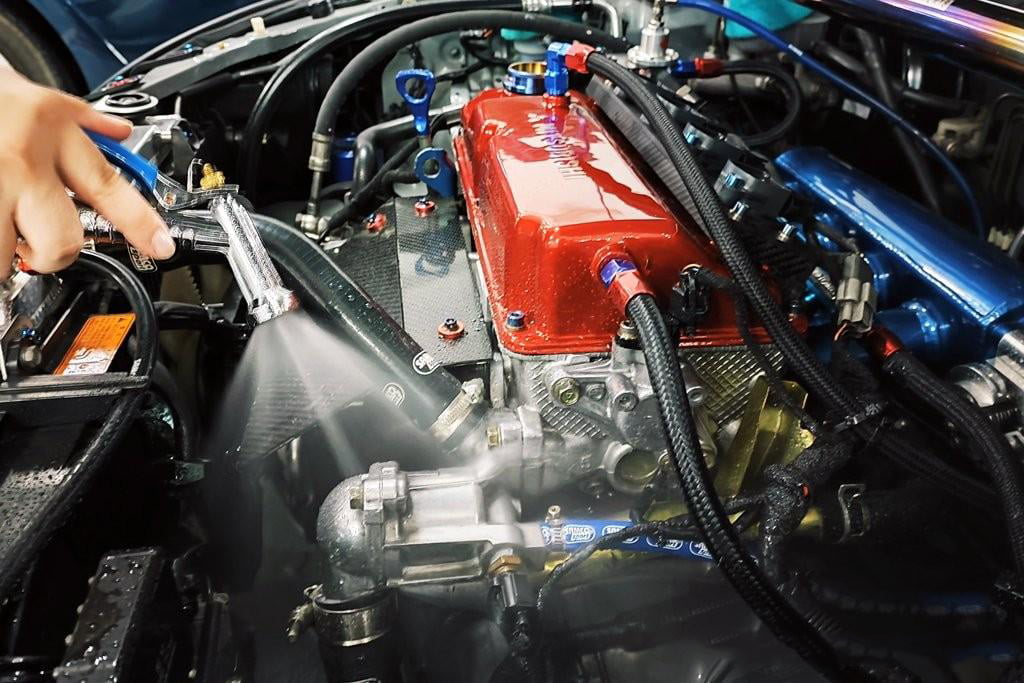
Detailing your car’s engine bay is akin to organizing your storage room – while others may not take notice, it is still an important task that should be undertaken. A cluttered storage room can make it challenging to locate items when needed. Similarly, a dirty engine bay can conceal potential leaks and complicate the maintenance of your car.
In addition, a thick layer of dirt covering the engine and its cooling components can lead to cooling problems. By keeping your engine bay clean and well-maintained, you can ensure smooth operation. Additionally, who wouldn’t appreciate a pristine and visually appealing engine bay when they need to open the hood? With that in mind, here is a professional guide to help you safely detail your car’s engine bay.
What you need:
- Source of running water, with a hose or pressure washer
- Plastic bags
- Degreaser
- A small brush
- Cloth
- Simple tools (to undo battery connectors)
Optional: Metal polish, plastic restorer, wax, compressed air can or electric blower


Let engine cool down
Absolutely! Just like with glass, car components can also experience thermal stress and damage if they are rapidly cooled down after being hot. It is crucial to give your car’s engine enough time to cool down before washing the engine bay.
The cooling time will vary depending on how long you have been driving and how hot the engine is. It is generally recommended to wait at least 30 minutes or more to ensure the engine and its components have cooled down enough to be safely washed. Rushing the process can result in costly damages, so it’s better to be patient and allow enough cooling time before proceeding with cleaning.


Cover sensitive components so you can wash without worry
Great precautions! Disconnecting the battery is indeed an important step to minimize the risk of damaging electrical components when washing the engine bay. Removing the negative terminal is the recommended practice.
Covering sensitive components with plastic bags is also a smart move. The alternator, battery, ignition coils, wires, and engine control unit are all examples of components that should be protected from direct water exposure. If your car has an aftermarket air intake that is open, it is advisable to cover it as well to prevent water from entering and causing damage.
Once all critical areas are covered and protected, you can proceed with a pre-wash rinse. This step helps to remove loose dirt and dust, and also gives you an opportunity to identify areas that may require more thorough cleaning. It allows you to have a better assessment of the engine bay’s condition and plan further cleaning accordingly.
Degrease, brush and rinse
Now, it’s time for the bulk of the work. Start spraying degreaser all over the engine bay, with a focus on the particularly dirty and grimy areas.
Remember those areas that require deeper cleaning? With a small brush you can agitate the degreaser and get rid of the stubborn grime that has built up over the years with a nice scrubbing session.
Once all the dirt has been broken loose, and the degreaser had some time to do its work, you can proceed to rinse it all off. Do keep the water pressure at a moderate level so you don’t get water where you don’t want – those critical components covered under the plastic bags.


Dry and detail
After washing off all the degreaser and dirt, it’s important to thoroughly dry the engine bay. You can expedite this process by using compressed air, either from a can or with equipment like a leaf blower.
Once the majority of the engine bay is dry, you can proceed to detail it according to your desired outcome.
For bare metal surfaces, using a metal polishing compound and buffing can achieve a high level of shine. Plastic components can benefit from the application of plastic restorer or protection products to maintain their deep luster.
Smooth, painted surfaces within the engine bay can also be waxed to achieve a glossy finish, similar to how you would detail the exterior paint of your car.
Once everything is complete, remember to remove the plastic bags and reconnect your car’s battery. Congratulations! You have just cleaned your car’s engine bay like a professional car detailer!



